Artemis Accords signatories seek to boost transparency and safety in lunar exploration
Tuesday, 03 October 2023 12:14
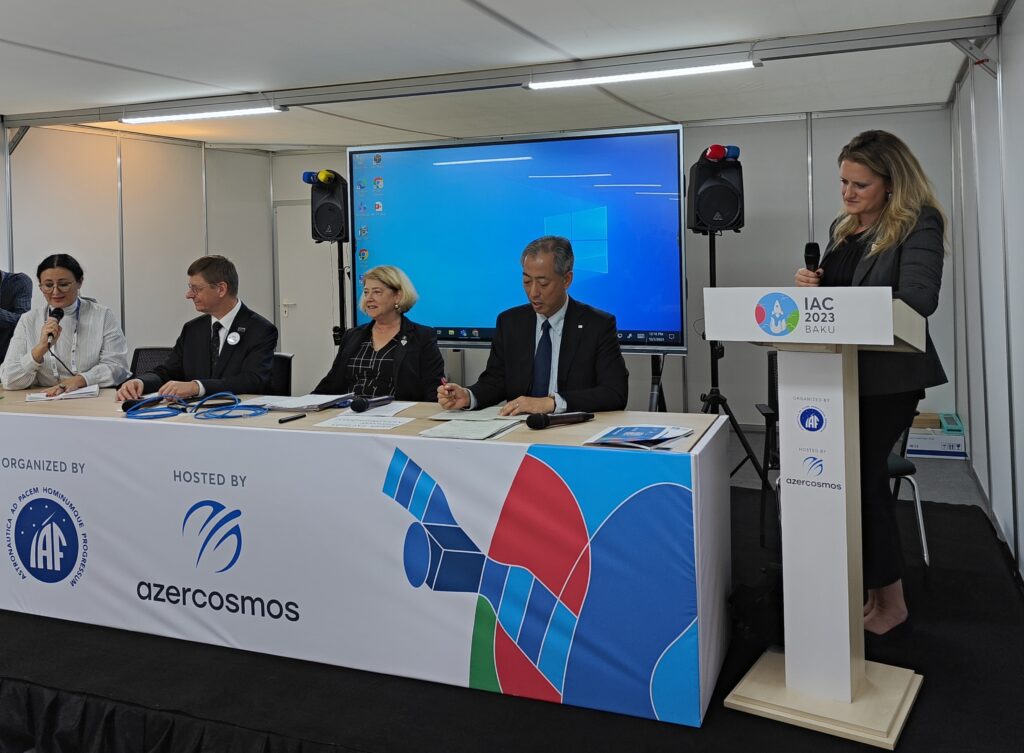
Sunday’s ESA Open Day programme online
Tuesday, 03 October 2023 10:52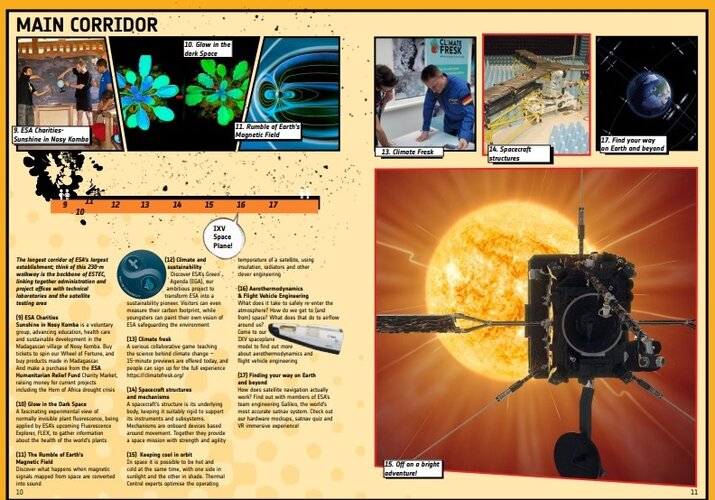
For all registered visitors for Sunday 8 October’s ESA Open Day at ESTEC in the Netherlands, the programme brochure for the day is now available to read through and plan your visit.
Vega’s ESTCube-2 tether to the future
Tuesday, 03 October 2023 10:16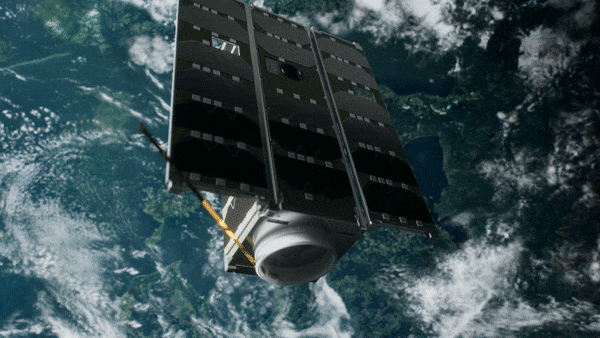
Estonia’s next satellite will fly aboard Europe’s Vega VV23 launcher later this week. While largely designed and built by undergraduate students, the shoebox-sized ESTCube-2 has ambitious goals in mind, including surveys of Estonian vegetation and the first successful in-orbit demonstration of ‘plasma brake’ technology. Deployment of a charged microtether will slow the CubeSat’s orbit, proving the prospect of helping to keep space clear of dangerous debris in the future.
Astronomers raise interference concerns from AST SpaceMobile satellite
Tuesday, 03 October 2023 09:37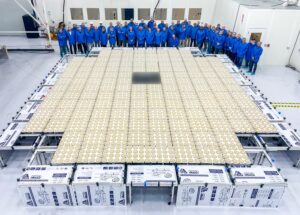
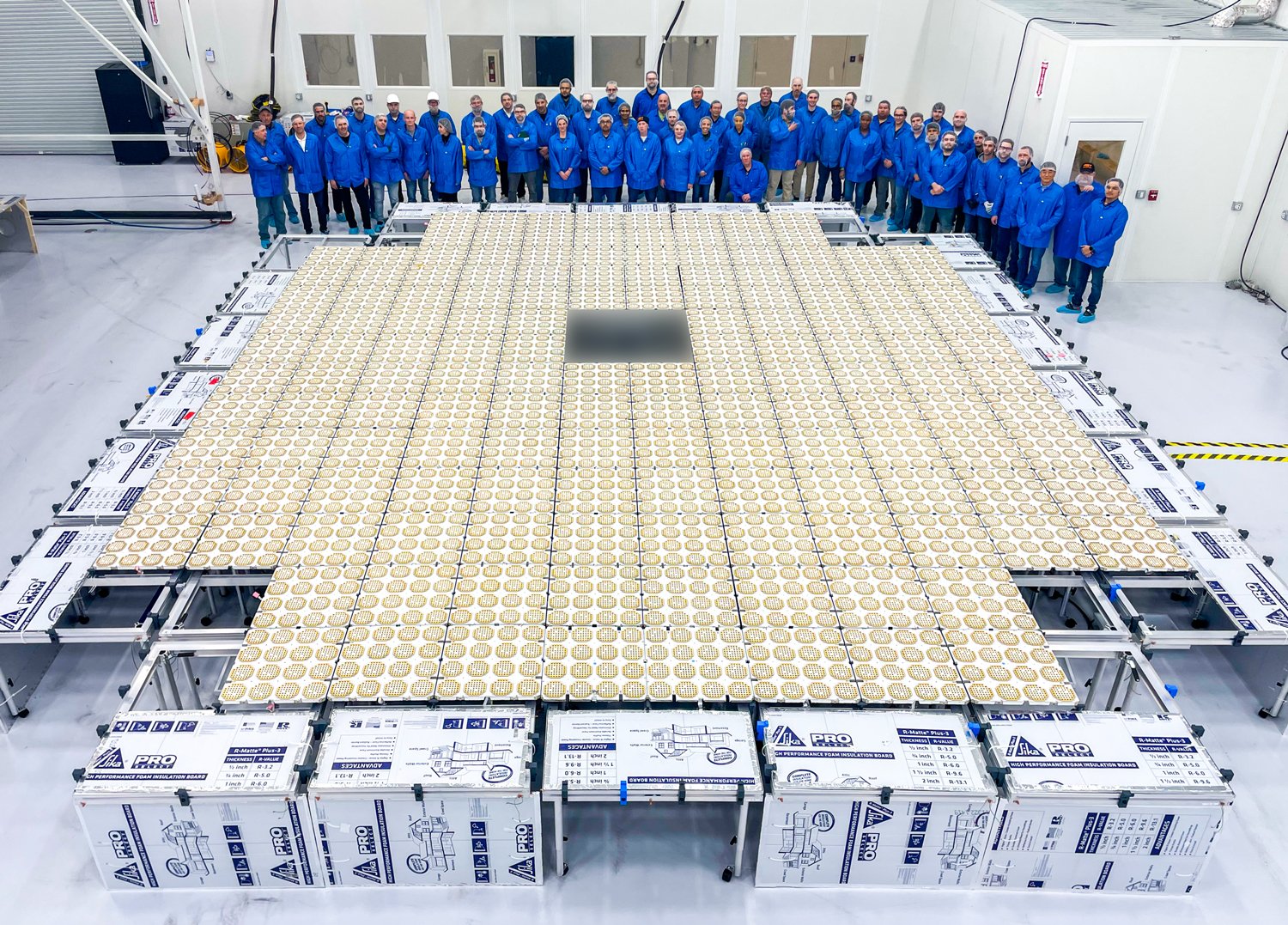
US TV provider given first-ever space debris fine
Tuesday, 03 October 2023 09:14
Washington (AFP) Oct 3, 2023
 US authorities have issued a "breakthrough" first-ever fine over space debris, officials said Monday, slapping a $150,000 penalty on a TV company that failed to properly dispose of a satellite.
The Federal Communications Commission (FCC) came down on Dish for "failure to properly deorbit" a satellite called EchoStar-7, in orbit since 2002.
"This marks a first in space debris enforcement
US authorities have issued a "breakthrough" first-ever fine over space debris, officials said Monday, slapping a $150,000 penalty on a TV company that failed to properly dispose of a satellite.
The Federal Communications Commission (FCC) came down on Dish for "failure to properly deorbit" a satellite called EchoStar-7, in orbit since 2002.
"This marks a first in space debris enforcement
 US authorities have issued a "breakthrough" first-ever fine over space debris, officials said Monday, slapping a $150,000 penalty on a TV company that failed to properly dispose of a satellite.
The Federal Communications Commission (FCC) came down on Dish for "failure to properly deorbit" a satellite called EchoStar-7, in orbit since 2002.
"This marks a first in space debris enforcement
US authorities have issued a "breakthrough" first-ever fine over space debris, officials said Monday, slapping a $150,000 penalty on a TV company that failed to properly dispose of a satellite.
The Federal Communications Commission (FCC) came down on Dish for "failure to properly deorbit" a satellite called EchoStar-7, in orbit since 2002.
"This marks a first in space debris enforcement Milestone for novel atomic clock
Tuesday, 03 October 2023 09:14
Berlin, Germany (SPX) Oct 02, 2023
 An international research team has taken a decisive step toward a new generation of atomic clocks. At the European XFEL X-ray laser, the researchers have created a much more precise pulse generator based on the element scandium, which enables an accuracy of one second in 300 billion years - that is about a thousand times more precise than the current standard atomic clock based on caesium. The t
An international research team has taken a decisive step toward a new generation of atomic clocks. At the European XFEL X-ray laser, the researchers have created a much more precise pulse generator based on the element scandium, which enables an accuracy of one second in 300 billion years - that is about a thousand times more precise than the current standard atomic clock based on caesium. The t
 An international research team has taken a decisive step toward a new generation of atomic clocks. At the European XFEL X-ray laser, the researchers have created a much more precise pulse generator based on the element scandium, which enables an accuracy of one second in 300 billion years - that is about a thousand times more precise than the current standard atomic clock based on caesium. The t
An international research team has taken a decisive step toward a new generation of atomic clocks. At the European XFEL X-ray laser, the researchers have created a much more precise pulse generator based on the element scandium, which enables an accuracy of one second in 300 billion years - that is about a thousand times more precise than the current standard atomic clock based on caesium. The t NASA announces launch services for pair of space weather satellites
Tuesday, 03 October 2023 09:14
Washington DC (SPX) Oct 01, 2023
 NASA has selected SpaceX of Hawthorne, California, and its Falcon 9 rocket to provide the launch service for the agency's TRACERS (Tandem Reconnection and Cusp Electrodynamics Reconnaissance Satellites) mission, a pair of small satellites that will study space weather and how the Sun's energy affects Earth's magnetic environment, or magnetosphere
TRACERS will be an important addition to NA
NASA has selected SpaceX of Hawthorne, California, and its Falcon 9 rocket to provide the launch service for the agency's TRACERS (Tandem Reconnection and Cusp Electrodynamics Reconnaissance Satellites) mission, a pair of small satellites that will study space weather and how the Sun's energy affects Earth's magnetic environment, or magnetosphere
TRACERS will be an important addition to NA
 NASA has selected SpaceX of Hawthorne, California, and its Falcon 9 rocket to provide the launch service for the agency's TRACERS (Tandem Reconnection and Cusp Electrodynamics Reconnaissance Satellites) mission, a pair of small satellites that will study space weather and how the Sun's energy affects Earth's magnetic environment, or magnetosphere
TRACERS will be an important addition to NA
NASA has selected SpaceX of Hawthorne, California, and its Falcon 9 rocket to provide the launch service for the agency's TRACERS (Tandem Reconnection and Cusp Electrodynamics Reconnaissance Satellites) mission, a pair of small satellites that will study space weather and how the Sun's energy affects Earth's magnetic environment, or magnetosphere
TRACERS will be an important addition to NA Trimble and AGCO form joint venture to better serve farmers worldwide
Tuesday, 03 October 2023 09:14
Westminster CO (SPX) Oct 02, 2023
 Trimble (NASDAQ: TRMB) has announced a definitive agreement to form a joint venture (the "JV") with AGCO (NYSE: AGCO) to better serve farmers with factory fit and aftermarket applications in the mixed fleet precision agriculture market. Trimble and AGCO's shared vision is to create a global leader in mixed fleet smart farming and autonomy solutions. In aggregate, Trimble expects approximately $3
Trimble (NASDAQ: TRMB) has announced a definitive agreement to form a joint venture (the "JV") with AGCO (NYSE: AGCO) to better serve farmers with factory fit and aftermarket applications in the mixed fleet precision agriculture market. Trimble and AGCO's shared vision is to create a global leader in mixed fleet smart farming and autonomy solutions. In aggregate, Trimble expects approximately $3
 Trimble (NASDAQ: TRMB) has announced a definitive agreement to form a joint venture (the "JV") with AGCO (NYSE: AGCO) to better serve farmers with factory fit and aftermarket applications in the mixed fleet precision agriculture market. Trimble and AGCO's shared vision is to create a global leader in mixed fleet smart farming and autonomy solutions. In aggregate, Trimble expects approximately $3
Trimble (NASDAQ: TRMB) has announced a definitive agreement to form a joint venture (the "JV") with AGCO (NYSE: AGCO) to better serve farmers with factory fit and aftermarket applications in the mixed fleet precision agriculture market. Trimble and AGCO's shared vision is to create a global leader in mixed fleet smart farming and autonomy solutions. In aggregate, Trimble expects approximately $3 James Webb telescope captures planet-like structures in Orion Nebula
Tuesday, 03 October 2023 09:14
Washington DC (UPI) Oct 2, 2023
 New images from the James Webb Space Telescope released Monday revealed planet-like structures in the Orion Nebula.
The photos shared by the European Space Agency were taken with Webb's near-infrared camera NIRCam and exposed elements of the nebula located south of the Orion belt, which scientists have described as a "treasure trove" for their studies of the formation and early evolutio
New images from the James Webb Space Telescope released Monday revealed planet-like structures in the Orion Nebula.
The photos shared by the European Space Agency were taken with Webb's near-infrared camera NIRCam and exposed elements of the nebula located south of the Orion belt, which scientists have described as a "treasure trove" for their studies of the formation and early evolutio
 New images from the James Webb Space Telescope released Monday revealed planet-like structures in the Orion Nebula.
The photos shared by the European Space Agency were taken with Webb's near-infrared camera NIRCam and exposed elements of the nebula located south of the Orion belt, which scientists have described as a "treasure trove" for their studies of the formation and early evolutio
New images from the James Webb Space Telescope released Monday revealed planet-like structures in the Orion Nebula.
The photos shared by the European Space Agency were taken with Webb's near-infrared camera NIRCam and exposed elements of the nebula located south of the Orion belt, which scientists have described as a "treasure trove" for their studies of the formation and early evolutio NASA will fly into Oct. eclipse's shadow
Tuesday, 03 October 2023 09:14
Greenbelt MD (SPX) Oct 01, 2023
 A NASA sounding rocket mission will launch three rockets during the 2023 annular eclipse in October to study how the sudden drop in sunlight affects our upper atmosphere.
On Oct. 14, 2023, viewers of an annular solar eclipse in the Americas will experience the Sun dimming to 10% its normal brightness, leaving only a bright "ring of fire" of sunlight as the Moon eclipses the Sun. Those in t
A NASA sounding rocket mission will launch three rockets during the 2023 annular eclipse in October to study how the sudden drop in sunlight affects our upper atmosphere.
On Oct. 14, 2023, viewers of an annular solar eclipse in the Americas will experience the Sun dimming to 10% its normal brightness, leaving only a bright "ring of fire" of sunlight as the Moon eclipses the Sun. Those in t
 A NASA sounding rocket mission will launch three rockets during the 2023 annular eclipse in October to study how the sudden drop in sunlight affects our upper atmosphere.
On Oct. 14, 2023, viewers of an annular solar eclipse in the Americas will experience the Sun dimming to 10% its normal brightness, leaving only a bright "ring of fire" of sunlight as the Moon eclipses the Sun. Those in t
A NASA sounding rocket mission will launch three rockets during the 2023 annular eclipse in October to study how the sudden drop in sunlight affects our upper atmosphere.
On Oct. 14, 2023, viewers of an annular solar eclipse in the Americas will experience the Sun dimming to 10% its normal brightness, leaving only a bright "ring of fire" of sunlight as the Moon eclipses the Sun. Those in t BlueHalo expands US satellite operation capacity under Space Force SCAR Program
Tuesday, 03 October 2023 09:14
Albuquerque NM (SPX) Sep 27, 2023
 BlueHalo recently hosted U.S. Space Force officials and federal legislative leaders for a successful milestone demonstration of its BADGER system, a multi-band, deployable ground terminal that enables resilient satellite communication.
This critical benchmark comes one year into development of the $1.4B Satellite Communication Augmentation Resource (SCAR) program announced by the Space Rap
BlueHalo recently hosted U.S. Space Force officials and federal legislative leaders for a successful milestone demonstration of its BADGER system, a multi-band, deployable ground terminal that enables resilient satellite communication.
This critical benchmark comes one year into development of the $1.4B Satellite Communication Augmentation Resource (SCAR) program announced by the Space Rap
 BlueHalo recently hosted U.S. Space Force officials and federal legislative leaders for a successful milestone demonstration of its BADGER system, a multi-band, deployable ground terminal that enables resilient satellite communication.
This critical benchmark comes one year into development of the $1.4B Satellite Communication Augmentation Resource (SCAR) program announced by the Space Rap
BlueHalo recently hosted U.S. Space Force officials and federal legislative leaders for a successful milestone demonstration of its BADGER system, a multi-band, deployable ground terminal that enables resilient satellite communication.
This critical benchmark comes one year into development of the $1.4B Satellite Communication Augmentation Resource (SCAR) program announced by the Space Rap Iran will launch two more satellites into space: IRGC cmdr
Tuesday, 03 October 2023 09:14
Tehran (IRNA) Oct 02, 2023
 A senior commander of the Islamic Revolution Guards Corps (IRGC) has announced that Iran will launch two more satellites into space by the end of the calendar year ending March 19.
Brigadier General Amir-Ali Hajizadeh, the commander of the IRGC's Aerospace Division, made the announcement on Wednesday following the successful launch of Nour-3, an imaging satellite, into orbit.
"Nour-3
A senior commander of the Islamic Revolution Guards Corps (IRGC) has announced that Iran will launch two more satellites into space by the end of the calendar year ending March 19.
Brigadier General Amir-Ali Hajizadeh, the commander of the IRGC's Aerospace Division, made the announcement on Wednesday following the successful launch of Nour-3, an imaging satellite, into orbit.
"Nour-3
 A senior commander of the Islamic Revolution Guards Corps (IRGC) has announced that Iran will launch two more satellites into space by the end of the calendar year ending March 19.
Brigadier General Amir-Ali Hajizadeh, the commander of the IRGC's Aerospace Division, made the announcement on Wednesday following the successful launch of Nour-3, an imaging satellite, into orbit.
"Nour-3
A senior commander of the Islamic Revolution Guards Corps (IRGC) has announced that Iran will launch two more satellites into space by the end of the calendar year ending March 19.
Brigadier General Amir-Ali Hajizadeh, the commander of the IRGC's Aerospace Division, made the announcement on Wednesday following the successful launch of Nour-3, an imaging satellite, into orbit.
"Nour-3 Raisi: Nour 3 satellite launch another sign of sanctions' failure
Tuesday, 03 October 2023 09:14
Tehran (IRNA) Oct 02, 2023
 Iran's President Ebrahim Raisi has congratulated the nation on the successful launch of the Nour 3 imaging satellite into the space, describing the achievement as another sign of the failure of the sanctions and threats by the enemies of the Islamic Republic.
The president issued a message on Wednesday, hours after his Minister of Information and Communications Technology Issa Zarepour ann
Iran's President Ebrahim Raisi has congratulated the nation on the successful launch of the Nour 3 imaging satellite into the space, describing the achievement as another sign of the failure of the sanctions and threats by the enemies of the Islamic Republic.
The president issued a message on Wednesday, hours after his Minister of Information and Communications Technology Issa Zarepour ann
 Iran's President Ebrahim Raisi has congratulated the nation on the successful launch of the Nour 3 imaging satellite into the space, describing the achievement as another sign of the failure of the sanctions and threats by the enemies of the Islamic Republic.
The president issued a message on Wednesday, hours after his Minister of Information and Communications Technology Issa Zarepour ann
Iran's President Ebrahim Raisi has congratulated the nation on the successful launch of the Nour 3 imaging satellite into the space, describing the achievement as another sign of the failure of the sanctions and threats by the enemies of the Islamic Republic.
The president issued a message on Wednesday, hours after his Minister of Information and Communications Technology Issa Zarepour ann A newly identified virus emerges from the deep
Tuesday, 03 October 2023 09:14
Washington DC (SPX) Sep 26, 2023
 The Mariana Trench, the deepest place on Earth, plunges nearly 11,000 meters at its lowest point on the floor of the Pacific Ocean. Life persists in the deep and cold darkness, and "wherever there's life, you can bet there are regulators at work," said marine virologist Min Wang, Ph.D, at the Ocean University of China, in Qingdao. "Viruses, in this case."
This week in Microbiology Spectrum
The Mariana Trench, the deepest place on Earth, plunges nearly 11,000 meters at its lowest point on the floor of the Pacific Ocean. Life persists in the deep and cold darkness, and "wherever there's life, you can bet there are regulators at work," said marine virologist Min Wang, Ph.D, at the Ocean University of China, in Qingdao. "Viruses, in this case."
This week in Microbiology Spectrum
 The Mariana Trench, the deepest place on Earth, plunges nearly 11,000 meters at its lowest point on the floor of the Pacific Ocean. Life persists in the deep and cold darkness, and "wherever there's life, you can bet there are regulators at work," said marine virologist Min Wang, Ph.D, at the Ocean University of China, in Qingdao. "Viruses, in this case."
This week in Microbiology Spectrum
The Mariana Trench, the deepest place on Earth, plunges nearly 11,000 meters at its lowest point on the floor of the Pacific Ocean. Life persists in the deep and cold darkness, and "wherever there's life, you can bet there are regulators at work," said marine virologist Min Wang, Ph.D, at the Ocean University of China, in Qingdao. "Viruses, in this case."
This week in Microbiology Spectrum As Earth heats up, rain pours down
Tuesday, 03 October 2023 09:14
Washington DC (SPX) Sep 26, 2023
 Earth's land masses have a higher chance of becoming wetter than drier as temperatures rise. In a new study, researchers found that co-occurring precipitation and heat extremes will become more frequent, severe and widespread under climate change, more so than dry and hot conditions.
When wet-hot conditions strike, heat waves first dry out the soil and reduce its ability to absorb water. S
Earth's land masses have a higher chance of becoming wetter than drier as temperatures rise. In a new study, researchers found that co-occurring precipitation and heat extremes will become more frequent, severe and widespread under climate change, more so than dry and hot conditions.
When wet-hot conditions strike, heat waves first dry out the soil and reduce its ability to absorb water. S
 Earth's land masses have a higher chance of becoming wetter than drier as temperatures rise. In a new study, researchers found that co-occurring precipitation and heat extremes will become more frequent, severe and widespread under climate change, more so than dry and hot conditions.
When wet-hot conditions strike, heat waves first dry out the soil and reduce its ability to absorb water. S
Earth's land masses have a higher chance of becoming wetter than drier as temperatures rise. In a new study, researchers found that co-occurring precipitation and heat extremes will become more frequent, severe and widespread under climate change, more so than dry and hot conditions.
When wet-hot conditions strike, heat waves first dry out the soil and reduce its ability to absorb water. S 